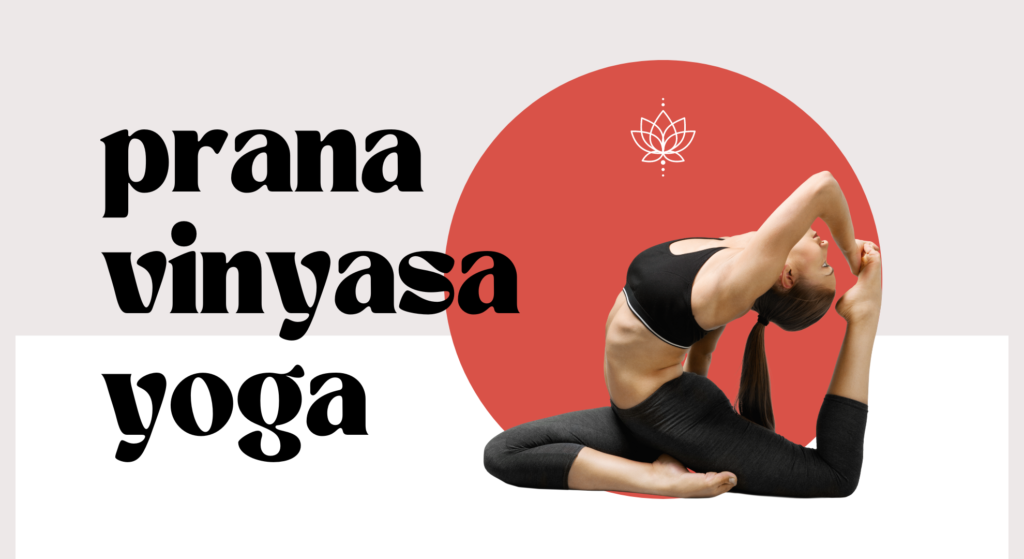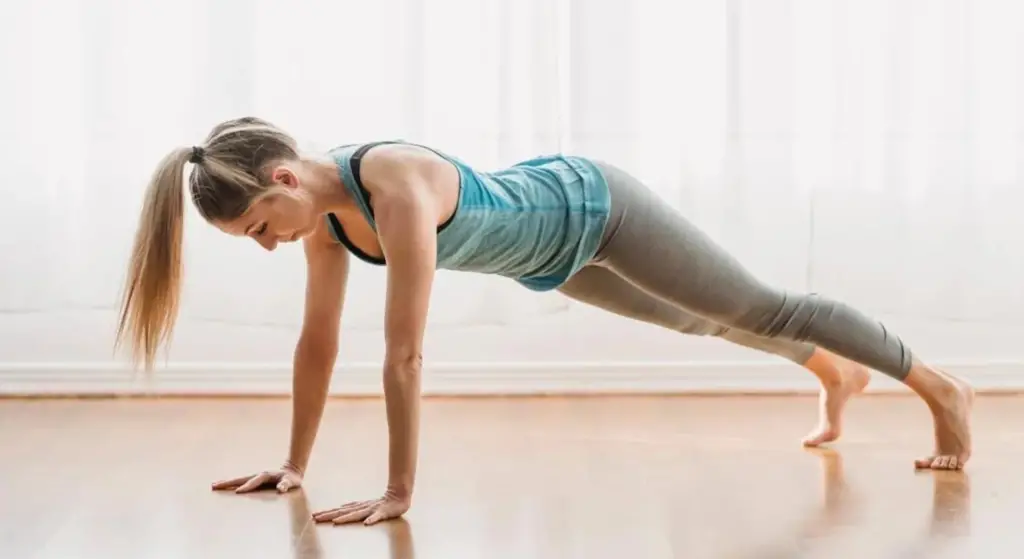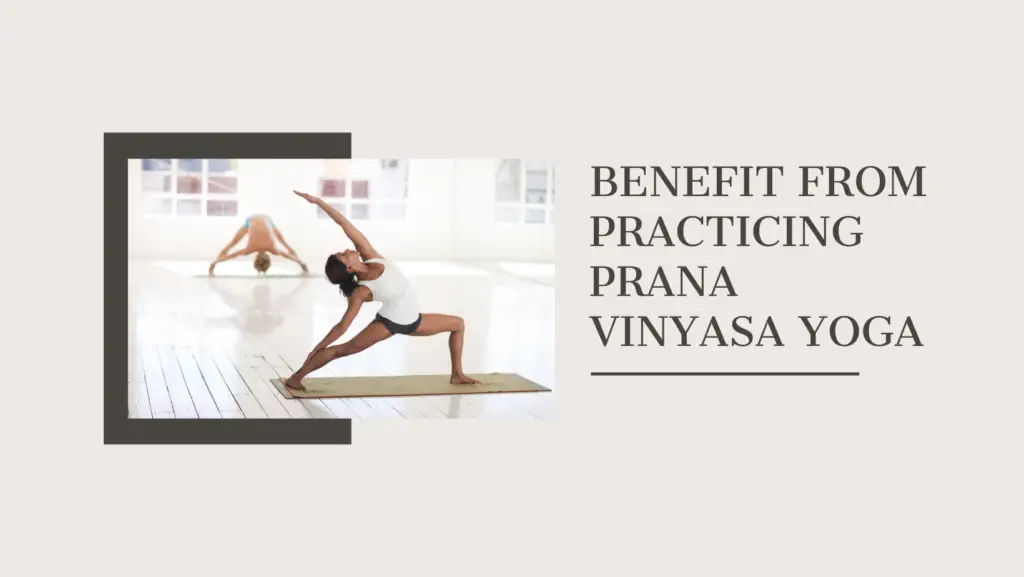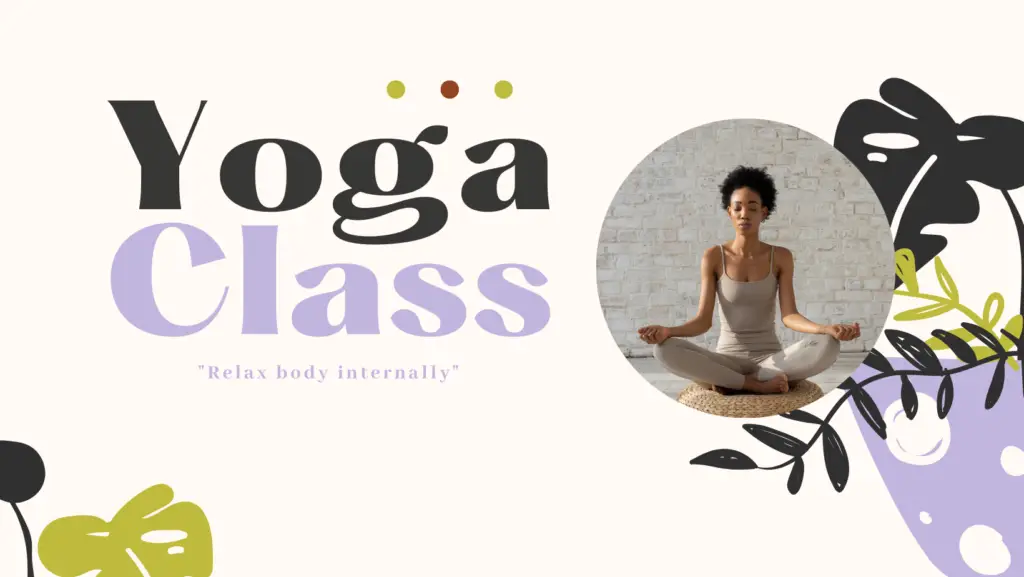
What is prana vinyasa yoga?
Prana vinyasa yoga is a style of yoga that focuses on connecting movement with breath and harnessing prana, or life force energy, within the body. It was developed in the mid-1990s by American yoga teacher Shiva Rea, who wanted to create a more dynamic and creative style of vinyasa yoga.
Prana vinyasa integrates elements of vinyasa flow, with its smooth transitions between poses, and alignment-based hatha yoga, with attention to form and technique. It also incorporates important pranayama breathing exercises and meditation. The term “prana vinyasa” emphasizes the connection between breath (prana) and sequence (vinyasa).
The main goal of prana vinyasa is to be energy-based. By using the breath to sequence between asanas, practitioners release areas of blocked energy and cultivate greater vitality and inner balance. The practice aims to tap into pranic energy and allow it to flow smoothly throughout the body.
Some key elements that distinguish prana vinyasa from other yoga styles include:
- Creative, intuitive sequencing that emerges spontaneously based on inner guidance
- Focus on the transitions between poses as much as the poses themselves
- Movement synchronized with the natural rhythm of the breath
- Exploration of subtle energy flow in the body
- Meditation and mindfulness to become aware of pranic movement
Prana vinyasa sequences have an arc that moves from opening to peak poses, counterposes, and relaxation. However the specific movements are different every time, depending on the instructor’s and students’ energy that day. There is an emphasis on being present, feeling energy, and letting intuition guide the flow.
Key Elements of Prana Vinyasa Yoga

There are several core components that define a prana vinyasa yoga practice:
Asana (Poses)
- The asanas or poses flow smoothly from one to the next, connected by the breath.
- Sequences are creative and explore the body in all directions – forward folds, backbends, twists, lateral bends, hip openers, etc.
- Sun salutations are often used as foundational sequences. More challenging peak poses may be added such as inversions, arm balances, or binds.
- Attention is paid to alignment and technique just as in hatha yoga.
Pranayama (Breathwork)
- The breath is slow, steady, and conscious throughout the practice.
- Specific pranayama techniques like ujjayi, kapalabhati, and nadi shodhana alternate nostril breathing may be used.
- The movement transitions between each asana are dictated by the inhales and exhales.
Meditation
- Short periods of stillness and meditation are interspersed to observe the flow of prana.
- Meditation can be done in a seated or supine savasana position.
- The intention is to cultivate inner awareness and connect with subtle energy.
Bandhas
- Bandhas are energy locks engaged to direct the flow of prana in the body.
- Key bandhas used are mula bandha, uddiyana bandha, and jalandhara bandha.
Chanting
- Mantras, bija mantras, or affirmations may be chanted to enhance the pranic energy.
Unique Sequencing Approach in Prana Vinyasa

One of the defining features of prana vinyasa yoga is the dynamic, intuitive sequencing that connects each asana to the next. There are several key aspects that make the sequencing unique:
Spontaneous Flow
- Sequences evolve spontaneously in the moment based on the instructor’s intuition and inner guidance.
- Rather than following a pre-planned sequence, each class unfolds differently according to energy levels.
- Allowing intuition to guide the practice makes it adaptable to students’ needs.
Wave-Like Flow
- Asanas are linked together into smooth “waves” of movement, almost like a dance.
- Attention is placed on the transitions between poses as much as the poses themselves.
- The wave-like flow allows prana to build and peak before coming back down.
Breath-Body Connection
- The inhales and exhales provide the rhythm and impulse for transitioning between asanas.
- Movement and breath synchronize in a natural, cyclical pattern.
- Breath cues guide students smoothly through the sequence.
Present Moment Focus
- Students are encouraged to stay present and feel the flow of prana guiding the sequence.
- Waves rise and fall based on the energy cultivated at the moment.
- The mental focus stays anchored in the breath instead of jumping ahead.
The sequencing principles give prana vinyasa an open, exploratory sensation very different from a rigid, pre-planned yoga class. Each sequence is a journey powered by breath and energy.
Prana Vinyasa Poses and Techniques

Prana vinyasa yoga incorporates a wide range of asanas, pranayama practices, and techniques to facilitate energy flow in the body. Some of the key components of a prana vinyasa sequence include:
Asanas
- Sun Salutations (Surya Namaskar): Foundational sequences to warm up the body and establish a mind-breath connection.
- Standing Poses: Warrior poses, balancing poses like tree or eagle, lateral stretches. Build heat and stamina.
- Forward Folds: Seated and standing folds such as paschimottanasana or uttanasana. Calming, introspective.
- Backbends: Heart-openers like camel, bow, or wheel pose. Energizing and expansive.
- Twists: Seated and standing twists wring out toxins and increase spinal flexibility.
- Hip Openers: Supine or seated poses like frog pose or pigeon prep the hips for deeper poses.
- Core Work: Navasana, plank, and boat pose strengthen the core and solar plexus.
Pranayama
- Ujjayi Breath: Ocean-sounding breath establishes a smooth rhythm.
- Kapalabhati: Rapid exhales energize and cleanse the system.
- Nadi Shodhana: Alternate nostril breathing balances right and left energy channels.
Meditation
- Quiet awareness: Observing pranic flow and subtle sensations.
- Yoga Nidra: Systematic relaxation of the body from toes to head.
Benefits of Regular Prana Vinyasa Yoga Practice
When practiced regularly, prana vinyasa yoga can provide a wide array of physical, mental, and energetic benefits:
Improved Energy and Vitality
- The dynamic sequences, breathwork, and bandhas help clear blocked energy channels.
- Increased pranic flow boosts oxygenation and circulation.
- Practitioners often report feeling more energized yet calm after class.
Reduced Stress and Anxiety
- The rhythmic breathing and meditation create a sense of inner peace.
- Moving meditation helps release mind chatter and emotional stagnation.
- Many students find it lessens anxiety, depression, and stress disorders.
Increased Lung Capacity
- The integrated pranayama techniques expand lung capacity over time.
- More oxygen circulates to all the body’s systems and cells.
Emotional Balance
- The mind-body connection established helps regulate mood and emotions.
- Releasing stagnant energy provides relief from grief, anger, or trauma.
Body Awareness and Mindfulness
- Tuning into subtle energy flow increases intuition and mindfulness.
- Most students become more attuned to their body’s needs and imbalances.
- Focus shifts from thinking to present-moment experience.
Tips for Getting Started with Prana Vinyasa
Prana vinyasa yoga can be a very rewarding practice, but it may feel challenging at first. Here are some tips to help you start out:
Take Classes with Experienced Teachers
- Learning the foundational sequences and principles from qualified teachers is invaluable.
- They can provide cues on alignment, adjustments, and pacing.
- Classes allow you to get comfortable before practicing solo at home.
Start Slow and Simple
- Begin with slower-paced classes focusing on basic asanas and breathing.
- Allow time to learn how to smoothly link poses and synchronize with the breath.
- Don’t rush into advanced sequences too quickly. Build your practice gradually.
Follow Your Intuition
- Explore modifying sequences in ways that feel good in your body.
- Don’t worry about “perfecting” the sequences; just flow intuitively.
- Let your inner guidance about what your body needs that day lead the way.
Connect Movement with Breath
- Keep your attention anchored in your breath during flows.
- Inhales and exhales should provide the impulse for transitions.
- Maintain steady ujjayi breathing throughout practice.
Stay Present
- Observe subtle sensations and energy shifts that occur during flows.
- Notice areas of blocked or stagnant energy to release them.
- Keep focused on each flowing wave rather than the big picture sequence.
Who Can Benefit from Practicing Prana Vinyasa Yoga?

Prana Vinyasa is suitable for yoga students of all levels, but tends to appeal most to the following groups:
Those Seeking a More Energetic Practice
- The flowing sequences provide more heat and intensity than traditional hatha styles.
- The emphasis on movement and breath increases circulation and energy.
- Athletes like the dynamic, dance-like elements.
Stress and Anxiety Relief
- The pranayama and meditation practices calm the nervous system.
- Releasing blocked energy can relieve anxiety, depression, and PTSD.
- The introspective elements provide stress relief.
Boosting Energy and Vitality
- Excellent for counteracting fatigue, brain fog, and low motivation.
- Improved energy channels and oxygenation increase overall vitality.
- The breathwork invigorates cells and clears out toxins.
Experienced Yoga Practitioners
- Provides new challenges and creative sequencing for seasoned students.
- Ideal for hatha/vinyasa practitioners looking to add meditation and energy work.
- Teachers can incorporate prana vinyasa elements into their classes.
Inner Balance and Self-Discovery
- The intuitive sequences facilitate going inward to know oneself more deeply.
- Increased energy flow and mindfulness foster personal growth.
Sample Prana Vinyasa Yoga Sequence
Below is an example sequence to provide a taste of a prana vinyasa yoga flow:
- Start in an easy cross-legged seated position. Set intention.
- 3 rounds of Kapalabhati brisk breath to energize.
- The child’s pose to center and sink inward.
- Downward Facing Dog – walk out to plank – lower down to cobra or upward facing dog. Flow with breath.
- Repeat down dog, plank, cobra/up dog sequence, synchronizing breath. Build heat.
- Walk feet to the top of the mat. Hang in forward fold, grabbing elbows. Bend knees to release back.
- Rise to standing forward fold, transitioning smoothly. Soften knees.
- Rise to standing, sweeping arms overhead. Gather energy.
- Sun salutations A and B with smooth transitions between each move. Flow with breath. Go at your own pace.
- Hold Warrior II – feel strength and energy. Switch sides.
- Windmill arms down to standing forward fold – rag doll and release.
- Rise to stand and sweep arms overhead. Gather energy.
- Eagle pose – hook foot behind standing leg. Wrap your arms in eagle. Hold for 5 breaths.
- Release back to standing. Repeat on the other side.
- Return to easy cross-legged seated position.
- Allow sequence to absorb. Observe subtle energy shifts.
- Savasana 7-10 minutes. Scan the body and notice pranic flow.
Finding Prana Vinyasa Yoga Classes and Teachers

If you want to experience prana vinyasa in a guided class setting, here are some tips for finding qualified teachers and studios:
Local Studios
- Search online directories like YogaFinder for local studios offering prana vinyasa classes.
- Larger metropolitan areas will have more options than rural areas.
- Ask about the teacher’s background and certification in prana vinyasa.
Online Classes
- Sites like YogaGlo, Cody, and Gaiam offer streaming prana vinyasa videos and live classes.
- This allows you to sample different teachers’ styles before committing.
- Check teachers’ profiles to ensure substantial prana vinyasa training.
Immersions and Workshops
- Many studios offer weekend or week-long prana vinyasa intensives.
- These allow you to deepen your practice quickly with one teacher.
- Can be more affordable than training programs.
Teacher Trainings
- Reputable prana vinyasa teacher trainings preserve the style’s integrity.
- Shiva Rea, Janet Stone, and Hemalayaa Behl are influential teachers with training.
- Prepare to complete 200+ hours over 1-2 months. Invest in a solid foundation.
With a wealth of online and local resources, intriguing prana vinyasa classes and teachers are accessible in most areas. Sample different styles until you find the right fit.
Books, Videos, and Music to Enhance Your Practice
Complement your prana vinyasa yoga practice with these helpful resources:
Books and Manuals
- Prana Vinyasa Flow Yoga by Shiva Rea – founder’s comprehensive manual
- Prana Flow Yoga by Twee Merrigan – detailed sequences and teaching methodology
- Yoga of the Subtle Body by Tias Little – prana vinyasa foundations and principles
Instructional Videos
- Shiva Rea’s Prana Vinyasa series on YogaGlo – learn from the source
- Janet Stone’s Creative Vinyasa Flow videos – fluid and graceful sequencing
- Yoga with Tim Senesi YouTube channel – breakdown of key techniques
Music Playlists
- Belief in Om Records prana vinyasa series – percussion-driven world music
- Ananda Yoga Music for Vinyasa – energetic yet soothing
- Yoga Pop Uplifting Flow – upbeat electronic music to move to
- Yoga Girl Main Squeeze – soulful funk/jazz rhythms
Listening to inspiring music and watching videos can enrich your self-practice when classes are not accessible.
Incorporating Prana Vinyasa Principles into Other Styles of Yoga
Even if you mainly practice hatha, vinyasa, or another style of yoga, you can integrate elements of prana vinyasa to enhance your experience:
- Use intuitive, creative transitions between asanas rather than formulaic flows.
- Pay more attention to the quality of the transitions than just getting into poses.
- Allow the inhales and exhales to dictate the movement from one pose to the next.
- Explore spinal wave motions that link the upper and lower body.
- Cultivate an inner focus to become more aware of energetic shifts.
- Choose peak poses that elicit pranic flow through areas of blocked energy.
- Include pranayama like kapalabhati and nadi shodhana with the asanas.
- Close classes with yogic meditation to observe subtle energy.
- Guide students to sense energy flowing through the poses.
- Use chanting or mantras to set an intention.
- Encourage inner guidance to emerge rather than following a set sequence.
Even without pure prana vinyasa classes, integrating these principles can facilitate a more energy-based, meditative practice.
Frequently Asked Questions about Prana Vinyasa Yoga
Here are answers to some common questions for new practitioners:
-
How is prana vinyasa different from vinyasa yoga?
01. More focus on the transitions between poses rather than getting into the perfect alignment.
02. Intuitive, spontaneous sequencing rather than planned, repetitive flows.
03. Emphasis on feeling energy flow vs just synchronizing breath and movement. -
What can I expect as a beginner?
01. Most classes start with sun salutations to build heat and connection. Slower pace and explanation of foundations.
02. Simple standing poses, twists, and forward and back bends are accessible to all levels. Peak poses like arm balances are optional.
03. Expect to move intuitively rather than mimic choreography. Just follow your breath. -
How physically demanding is prana vinyasa?
01. It can be adapted for any fitness level. Flow at your own pace. Advanced students will build more internal heat with quicker flows.
02. Prepare for a dynamic, energizing practice rather than super gentle. -
What should I wear?
01. Comfortable athletic clothing you can flow in. Avoid baggy shirts or shorts. Yoga socks are optional.
02. Natural fiber clothing allows the skin to breathe and release heat. -
Will it conflict with my other training like running or weights?
01. The breathwork and mobility benefit most active lifestyles. Just listen to your body and avoid overtraining.
02. The energizing effects combine well with cardio and strength training for whole-body fitness.
Conclusion: The Energizing Effects of a Prana Vinyasa Practice
Prana vinyasa yoga is a dynamic style focused on harnessing subtle energy flow through creative sequences, breathwork, and meditation. Classes have an intuitive, wave-like flow guided by inhales and exhales rather than set poses.
Regular practice can help relieve stress, increase lung capacity and vitality, balance emotions, and cultivate mindfulness. The flowing sequences also provide a more energizing physical practice than traditional hatha yoga. Prana Vinyasa is suitable for all levels but especially benefits those seeking energy cultivation along with physical asanas.
While the free-flowing style may feel challenging at first, starting with beginner-friendly classes helps you progress safely. Resources like online videos and teacher training programs make this unique practice accessible for anyone drawn to its energy-based approach.
Adding elements of prana vinyasa like intuitive transitions, integrated pranayama, and inner awareness can complement and enhance any yoga practice. Listening inward, moving with your breath, and feeling the energy flow will deepen your experience beyond perfecting poses.
